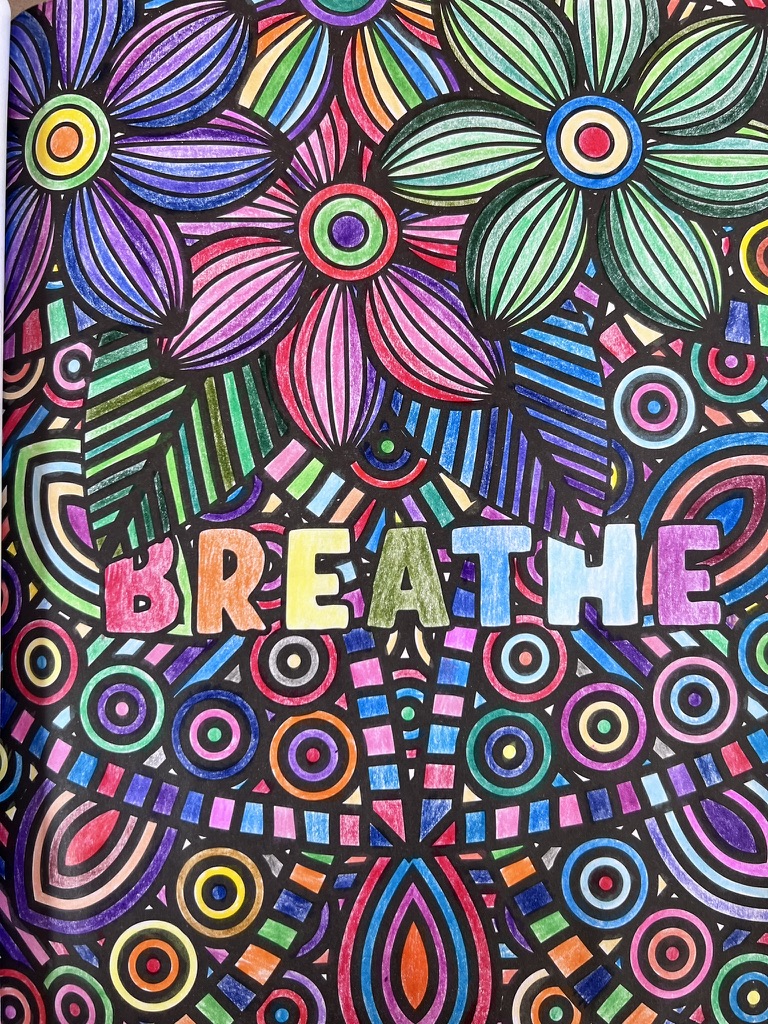You are likely well aware of the benefits of physical activity on heart health and are hopefully getting the minimum 150 minutes per week of moderate-intensity activity recommended by the CDC. But what about less physical activities? While I enjoy working up a good sweat during a run or a long hike up a mountain, I find immense joy tapping into my creative side. Whether playing guitar, writing, or coloring, the feeling of immersing myself in a creative pursuit and surfing the wave of “flow” is unlike any other.
These creative endeavors—be they painting, dancing, or even cooking—offer more than just mental satisfaction; they can contribute to heart health. This is a journey I’m excited to share with you.
Finding Flow Through Creativity
In his seminal book Flow: The Psychology of Optimal Experience, Dr. Mihaly Csikszentmihalyi, a renowned psychologist specializing in studying happiness and creativity, describes ‘flow’ as a state where one is so engrossed in an activity that nothing else seems to matter. He describes the conditions required for flow state: clear goals, receiving immediate feedback, and a balance between the activity and one’s ability to perform it. Too difficult of an activity leads to anxiety, and too easy of an activity leads to boredom.
It’s when this recipe comes together like a symphony that one can find themself in deep concentration, losing the sense of time or self-consciousness, and filled with intrinsic motivation – i.e., flow. Envision a surfer riding a perfect wave; the artistry, personal expression, and the connection to the wave transforms surfing from a mere physical activity into a creative pursuit. Through this lens, surfing, like other creative endeavors, can propel one into a state of flow.
When I play guitar—often late into the night—I sometimes reach this state of flow, where I am so absorbed that I must consciously decide to stop and prepare for bed. The endeavor to perfect a song encapsulates all the ingredients necessary for achieving flow.
There are times when achieving flow is elusive, often when I’m not fully present. This might be because my attention is split, or because I’ve planned only a brief session before bed, not allowing myself to fully immerse. This is akin to an addict who must consciously choose not to indulge in order to prioritize their wellbeing. As much as I love playing the guitar, I equally value a good night’s sleep—which, as we’ve discussed in a previous article, is crucial for heart health. Therefore, sometimes sleep must take precedence over the euphoria of flow.
The Benefits of Flow
Dr. Csikszentmihalyi suggests that flow not only boosts creativity and productivity but also enhances happiness. From a cardiological perspective, engaging in creative flow can alleviate stress. This mental state allows you to focus fully on the activity at hand, displacing any stressful thoughts or distractions.
Supporting this, Dr. Harlan M. Krumholz, MD, a professor of medicine at Yale University and a noted expert on the connection between creativity and heart health, argues that creative pursuits act as a natural antidote to stress. According to an interview cited on the Bottom Line Inc. website, Dr. Krumholz notes that stress and flow are mutually exclusive; engaging in creative activities reduces stress, thereby lowering blood pressure, heart rate, and enhancing overall heart health.
Furthermore, the 2010 NIH report, titled “The Connection Between Art, Healing, and Public Health,” presents significant findings from multiple studies concerning the benefits of art therapy, particularly for cancer patients. One such study found that female cancer patients who engaged in visual arts—like textiles, card making, and pottery—not only focused more on positive life experiences but also enhanced their self-worth and maintained a social identity distinct from their illness. These artistic endeavors allowed them to express complex emotions in a symbolic way, alleviating preoccupation with their conditions.
Another study highlighted in the same report shows that cancer patients who participated in art therapy exhibited significant reductions in anxiety, anger, and stress. These results offer strong support for the therapeutic benefits of creative engagement in managing emotional and psychological challenges in clinical settings.
However, it’s important to note the limitations pointed out by the studies’ authors. They caution against making sweeping generalizations based on these findings alone, emphasizing the necessity for further research to understand and verify these promising outcomes fully.While rigorous, definitive research directly linking creativity to improved health outcomes is still developing, the existing findings consistently indicate that engaging in artistic activities can significantly reduce stress and anxiety. This aligns with insights from a previous WellTree article, which detailed how stress adversely affects heart health by increasing blood pressure, heart rate, and stress hormones, as well as decreasing heart rate variability (HRV)—a crucial indicator of stress resilience.
Let’s Get Creative!

Why not reallocate some of your leisure time—perhaps a bit of TV watching—toward creative endeavors? Several years ago, I discovered how relaxing coloring with my daughter could be. It was also a rewarding way to bond. This inspired me to invest in an adult coloring book (I LOVE this one warning: it includes some curse words) and high-quality pencils—a significant upgrade from my daughter’s crayons. This small change has not only helped me relax, but I’ve seen an improvement in the quality of my daughter’s coloring.
If coloring resonates with you, I highly recommend it. If not, find a creative activity that does. Your heart will thank you for it.

